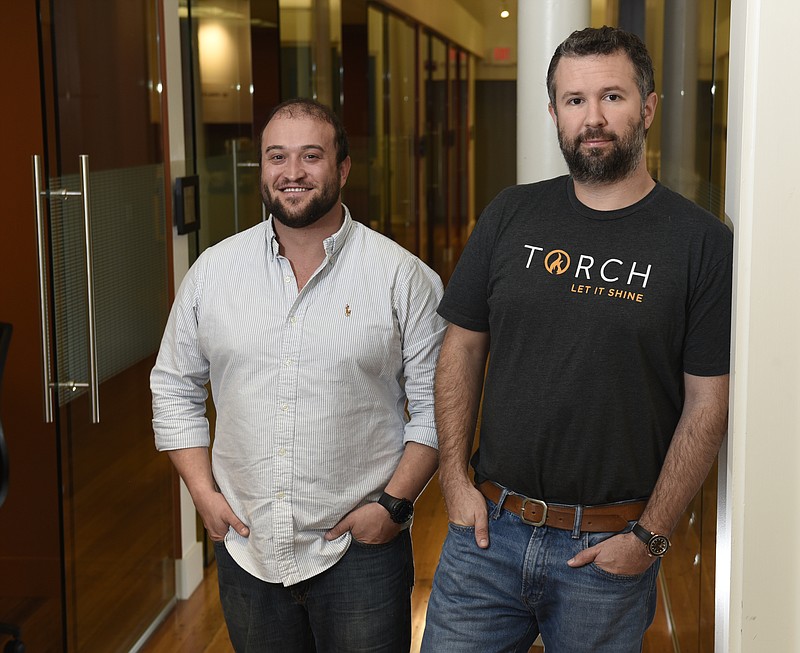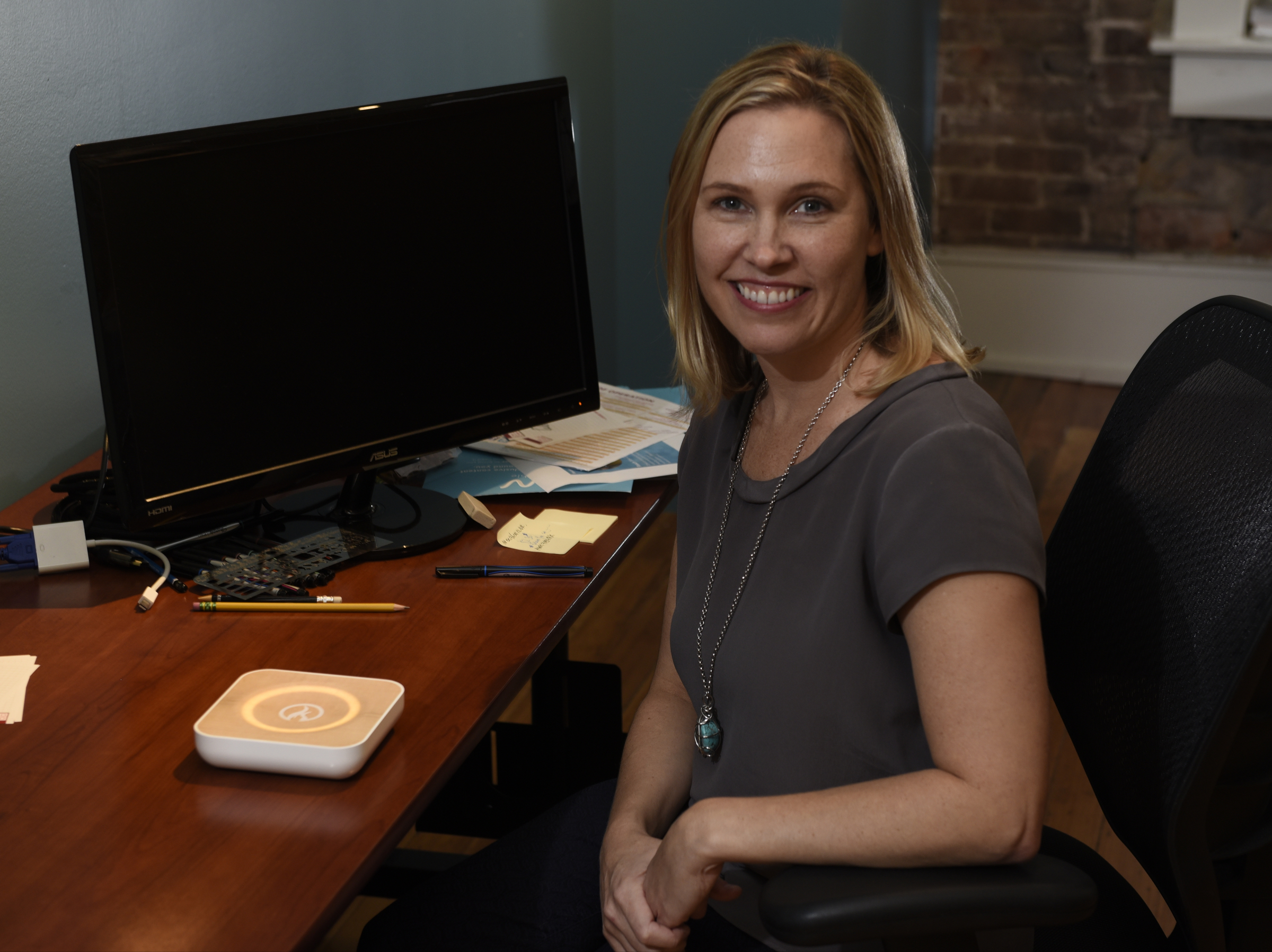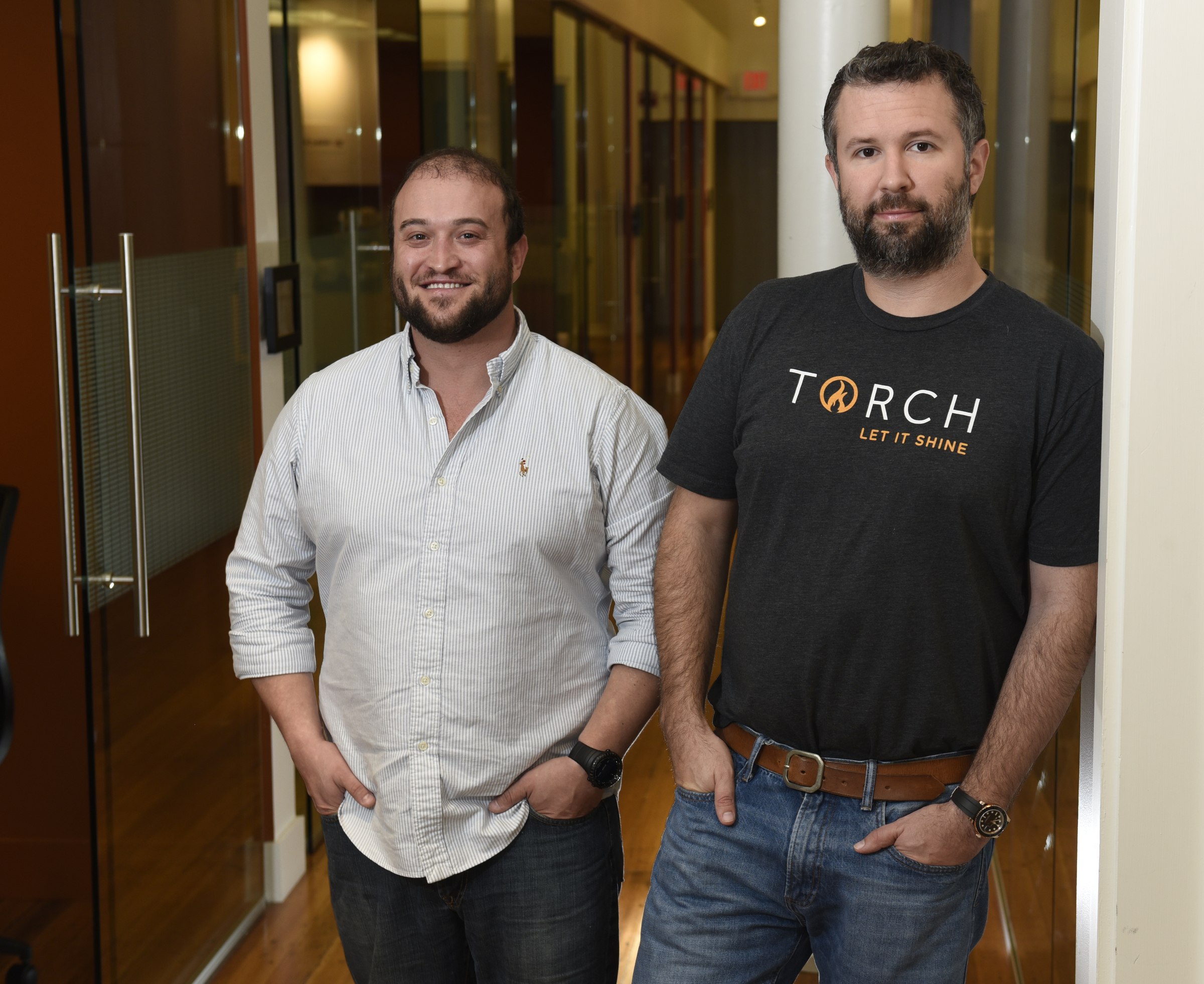"The Internet is a tool; it shouldn't be an interference in the kind of parent I want to be. I want there to be less stress, happier homes and more connection."
Tech specs
In addition to offering parents easier access to content-restricting features, the Torch wireless router also features technical specs on par with other high-end routers, including:› Dimensions: 5.3 inches wide, 5.3 inches long, 1.3 inches tall› Ports: 2 gigabit Ethernet, 1 USB 2.0 (for network-attached storage devices)› Wireless support: 802.11 b/g/n (2.4 gigahertz) and 802.11 a/ac/n (5 gigahertz)› Processor: 700 megahertz Qualcomm 9558› Storage: 256 megabyte flash memory, 32 megabyte failover› Memory: 256 megabyte DDR2 RAM
With gangly wireless antennas sprouting out of boxy plastic bodies, most Internet routers are like an ugly butler. Their function, while vital, is best fulfilled when they're out of sight.
By comparison, the Torch - a Chattanooga-based tech firm's in-development networking device - is elegantly understated. A round-cornered white square with nary an antenna in sight, it signals when it's doing its job of connecting household devices to the Internet via the soft glow of a light ring under its wood-veneered top.
But the founders of Torch - it's also the company's name - have loftier goals than simply gussying up the rank-and-file router. Through a host of features that can be accessed via a simple online user interface or an iPhone app, users will be able to observe and manage their children's online activity.
And in so doing, CEO Shelley Prevost says she hopes to revolutionize digital-age parenting. Instead of hiding its content-restricting features under layer after layer of menus, like many routers do, Torch puts them front and center.
"Basically, the whole point of what we're doing is to simplify the process of parenting because it's extremely overwhelming and cumbersome right now," Prevost says. "The Internet is a tool; it shouldn't be an interference in the kind of parent I want to be. I want there to be less stress, happier homes and more connection."
She knows about what she speaks; Prevost is the mother of three children: Eliah, 13, Lucas, 9, and Lennyn, 6.
When it becomes available next spring, Torch owners will use an intuitive interface to establish individual profiles for each of their children. They then will be able to specify which sites each child can visit, schedule specific devices to automatically go offline at predetermined times or "pause" Internet access with the touch of a button.
Torch also tracks each device's usage to generate analytics for parents that summarize how long each child spends on which sites and what categories of content - social media, educational, gaming, etc. - they show the most interest in. If everything goes as planned, Prevost says, these features should be simple to access even for those lacking in technical know-how.
"We took out all the technical jargon and put it behind a magic wall so parents don't really have to access it," she says. "We do all the configuring and strip down and humanize the whole experience."
On Oct. 20, Torch (the company) launched a Kickstarter to fund Torch (the router). With a goal of raising $150,000 by Nov. 19, the campaign had attracted more than 360 backers and raised more than $60,000 by Oct. 28. Early backers of Torch can buy one for half off the $200 post-launch price.
More control with fewer options
A psychologist by training, Prevost is a managing partner and Director of Happiness at Market Street-based venture incubator Lamp Post Group, under whose umbrella Torch falls. About three years ago, the seeds of Torch were planted when her oldest son's obsession with the video game "Minecraft" began to impact her family.
"He was playing [online] all hours of the day and night," Prevost says. "He's really interested in it, but it was also becoming all-consuming."
Although features that block particular programs from accessing the Internet are baked in to most routers, Prevost says she and her husband couldn't figure out how to enable them. Eventually, they resorted to unplugging their router - and thus Internet to the entire house - at night to keep her son offline, but being forced to adopt such a scorched-earth approach left a lot to be desired, she says.
"The dilemma for me, as a parent, was how to help him find balance," Prevost says. "The last thing I wanted to do as a parent is to restrict the thing he loves the most, which is exploring the Internet and technology and learning to program."
In September 2014, after two years of arguments and with a mounting sense of frustrated helplessness, Prevost turned to her tech-savvy co-workers at Lamp Post Group to find out if she was missing some obvious solution.
For two weeks, Torch Chief Operating Officer Jack Studer retreated to a backroom of their office on the second floor of the Loveman Building with a sampling of market routers already on the market He poured over each device's settings, attempting to find a configuration that would give Prevost the control she needed without too much technical contorting. What he discovered is that routers tend to offer too much control and too little guidance to inexperienced users.
"No one has come up with a good [user interface] for routers, they just keep throwing new features at people and hope they like it," Studer says. "Maybe you do know what those [settings] are and maybe you don't, but 99 percent of the world doesn't care what IP subnet pool they're using; they just want to connect to the Internet."
The lack of a ready-made solution was frustrating, but it also presented an opportunity, Prevost says.
"The light bulb moment was: 'Why do I need a network engineering degree to protect my kids online?'" she says. "Most parents aren't IT engineers, nor do they want to be, so the idea came to make it super simple and build our company around customer empathy and user experience."
The convoluted design of most routers' software meant achieving that kind of simplicity was easier said than done. Many routers allow users to prevent programs from accessing the Internet through a feature called a firewall, but firewalls are designed to be used as a catch-all solution for the entire network. To offer the kind of flexibility they wanted parents to have, Torch needed to be able to set firewalls for indvidual devices and make altering them easy.
"Rolling a lot of that functionality into a button without losing the power it gives you was difficult," says Torch Chief Experience Officer Wayne Fullam. "Making the interface simple and easy to understand yet powerful is quite a challenge."
'Tech coaches'
Prevost says that although some might look at the Torch and focus on its restrictive features, she hopes to offer the reassurance parents need to give their kids more autonomy and - by showing the content they gravitate to - help encourage their desire to learn and grow.
"For me, it was never about restricting or blocking," she says. "My kids were on [the Internet] all the time, and I wanted to engage with them, I wanted to know what they're doing so I can parent them, not so I can spy on them. It's about understanding where their interests are taking them."
The back-of-the-box features Torch is touting are largely software-centric, but Prevost says she's banking on the company's emphasis on customer service to be just as appealing to parents who, like her, are desperate for help in understanding the technologies their children are embracing.
Once Torch goes live, the company will offer a help line manned by on-call "tech coaches." These representatives will troubleshoot issues with the router or other future Torch products but also answer questions about the online-based trends kids are interested in and talking about.
"Just knowing you can pick up the phone and call a tech coach to make sense of it [is] profound," Prevost says. "A lot of tech talk will be important, but we're also looking at the interpreters of the tech who will help parents understand the nuances of what's happening with gaming and the new social media sites that are coming out."
Removing as much complication from parenting as possible is crucial to Torch's mission of reaching a million homes by 2020, she adds, even if that means demystifying other companies' products, too.
"If a customer's son gets a new iPhone and they want to set it up, they should call us," she laughs. "We'll walk them through that and make sure it's not stressful or try to."
Contact Casey Phillips at cphillips@timesfreepress.com or 423-757-6205. Follow him on Twitter at @PhillipsCTFP.


